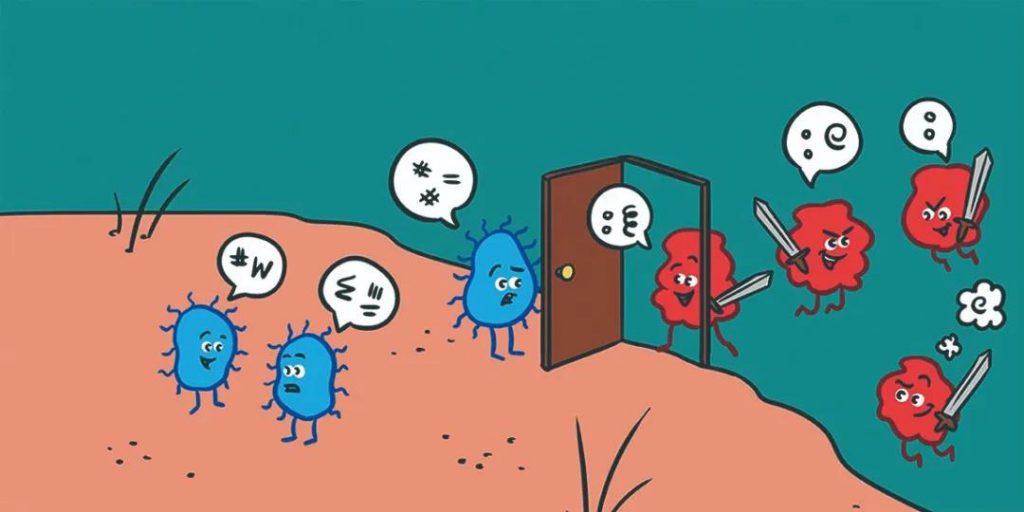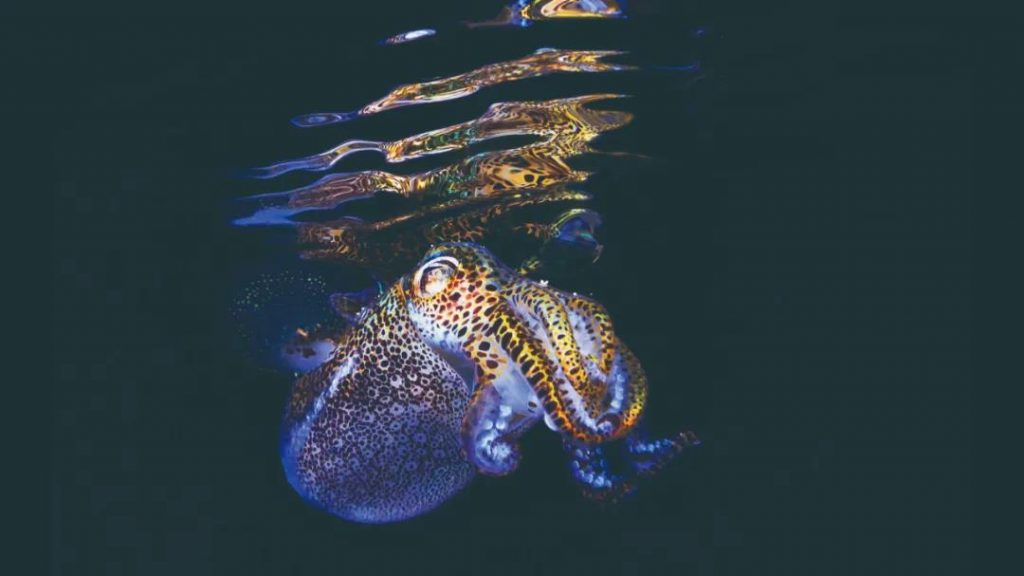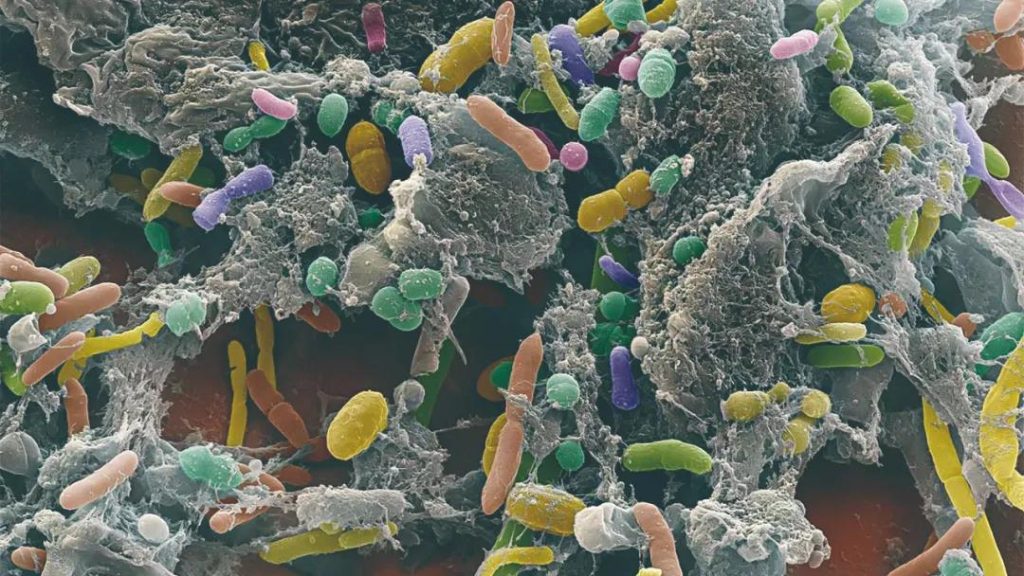
In March 1968, in Texas, USA, scientists Ellis Kempner and Frank Hansen were confused about how a bacteria from the ocean (now known as Vibrio fischeri) glows .

Bioluminescence is widespread in nature and can be used to attract mates, lure prey, and deter predators. Most animals that emit light live in the ocean, and they generally emit light on their own. However, there is also a small part that relies on others-luminescent bacteria to emit light. This is a typical symbiosis relationship. The two organisms cooperate with each other and benefit each other: bacteria provide this animal with “light” to help it gain a competitive advantage in the ocean, and this animal provides bacteria with a “warm and comfortable home” .
Conditional glow
This is the relationship between Vibrio fischeri and Hawaiian bobtail squid. Vibrio fischeri lives in the bobtail squid and helps it “glow”. The short-tailed squid is a tiny creature about 5 cm long. It is commonly found near the coast and lives a night life. When it appears near the water surface, it will have a clear outline under moonlight, making it easy to spot and prey by seals. As a result, it has evolved a “reflective” defense mechanism-allowing Vibrio fischeri a special “light organ” in its body (there is a bag containing bacteria and its “lens” and “reflector”) Living inside, and control the brightness and direction of the light it emits to eliminate its own contours.

Hawaiian Bobtail Squid
Vibrio fischeri does not always emit light. For example, when Kempner and Hansen found them on the decaying material on the seafloor, they were “not shiny.” This makes them feel puzzled-why do they glow in the squid’s body but not on the decaying matter? Later, when they cultured the bacteria, they found that these bacteria did not emit light when they first grew; only when their number increased to a certain level (about 2 billion bacterial cells per milliliter of culture medium), they It just started to shine.
They also found that if the Vibrio fischeri were cultivated to this amount and then removed from the culture solution, then only a small amount of bacteria need to be cultivated in the “treated” liquid, and they would immediately glow. ! Why is this? Kempner and Hansen believe that when the original bacteria are removed, they leave some information. It is this information that makes the smaller number of bacteria glow-which shows that the bacteria are communicating!
Smart “acting in concert”
So, what is this information and how does it work? It took Kempner and Hansen 20 years to figure out these problems, which involved two key proteins: LuxI and LuxR.
Vibrio fischeri will produce LuxI during the growth process. It is a simple signal molecule that can enter and exit freely in bacteria. As the cells divide and increase in number, it will accumulate more and more in the environment until it reaches a critical concentration. At this time, this signal molecule will bind to enough LuxR in the bacteria to trigger a behavioral “switch”. In other words, LuxR activates the cell’s mechanism of light production.

In the soil and water around us, and on our skin, there are hundreds of millions of invisible bacteria that are communicating secretly.
Essentially, what LuxI does is “speak”, what LuxR does is “listen”. This simple mechanism links the production of light to the number of bacteria. We can think that these bacteria are not stupid, because they know that only enough bacteria work together (luminescence), so that it makes sense; the efforts of a few bacteria will not help, instead of doing such meaningless things, it is better to keep your energy ( Does not consume energy to shine).
This form of communication is called “quorum sensing”, that is, microorganisms inform each other, and only when their number reaches a certain number, they will act in unison.
The activated LuxR will generate more of itself to combine with LuxI, and continuously strengthen this signal-the so-called “positive feedback loop”. It’s like a group of buffalo being caught by a lion. One of them spotted the lion first and ran away from fright. It spread panic and caused more cattle to start running; the increase in “running cattle” spread more The panic until the stampede finally occurred. Similarly, once the quorum sensing system of a small number of bacteria is activated, the communication will become more and more “intensified” until the entire group works together and acts in concert.
Later, scientists discovered quorum sensing genes in other types of bacteria. Although these genes are different, the basic mechanism of their operation is the same. One protein of the bacteria sends out a signal. As the number of bacteria increases, the signal gradually increases, while the other protein senses the signal and activates behavior when the number of bacteria is sufficient.
Apply his way to the other body
Quorum sensing has been shown to control the production of toxins, the exchange of DNA, and the formation of spores, but what is more important to us is whether it can be used to control bacterial infections.
Pseudomonas aeruginosa is a cunning bacteria that has a set of special functions. Once given the opportunity, it can infect plants, insects and humans, and vulnerable groups such as intensive care patients, burn patients, people with weak immune systems, and premature babies. Is often its primary goal. Once infected with it, it will cause pneumonia, and even the intestinal tissue will be eroded, and a quarter of the infected people will die as a result. Worryingly, the bacteria is learning to defeat antibiotics, which means it is more difficult to treat.
To cause infection, bacteria must produce toxins, destroy enzymes, and remove nutrients from molecules. Obviously, this requires a lot of energy, and it can only be done when enough bacteria are present. Therefore, quorum sensing plays a key role in infection.
This gives us an opportunity: if we can find a way to interfere with this signal of Pseudomonas aeruginosa (interfering with their communication), we should be able to stop the infection. At present, researchers have discovered molecules that can interfere with quorum sensing and eliminate Pseudomonas aeruginosa in the lungs of infected mice, and hope that they can be developed into clinical drugs.
“Free-riding” (speculative behavior that does not pay the cost but enjoys the benefit of others) is widespread in the biological world, and bacteria is no exception. They will mutate (deceive other bacteria) so that the quorum sensing system no longer functions, and then benefit from the work done by other companions. This provides us with another opportunity: perhaps this deception can be used to infiltrate the infected bacterial colony, thereby reducing the adaptability of the colony until all of them die.

Positive feedback loop: Once the quorum sensing system of a small number of bacteria is activated, the communication will become more and more “loud”, until the whole group acted together.
In addition, some bacteria will “eavesdrop” on the communication between other species. For example, when Pseudomonas aureus detects other types of quorum sensing molecules, it will produce antibiotics to kill emerging competitors; other bacteria Smarter, if there is a kind of greedy phage, it will use other kinds of quorum sensing molecules as its own food source, and get a free lunch while preventing other kinds of communication.
As our understanding of bacterial communication deepens, we can try to “speak” their language to serve our goals. At present, some synthetic biologists have used the quorum sensing of E. coli to improve the production of biofuels, thus providing a cost-effective way for the production of green energy.
Comments